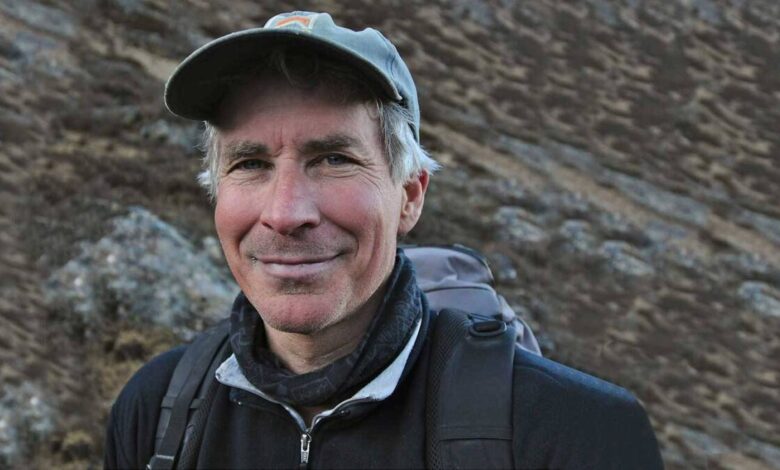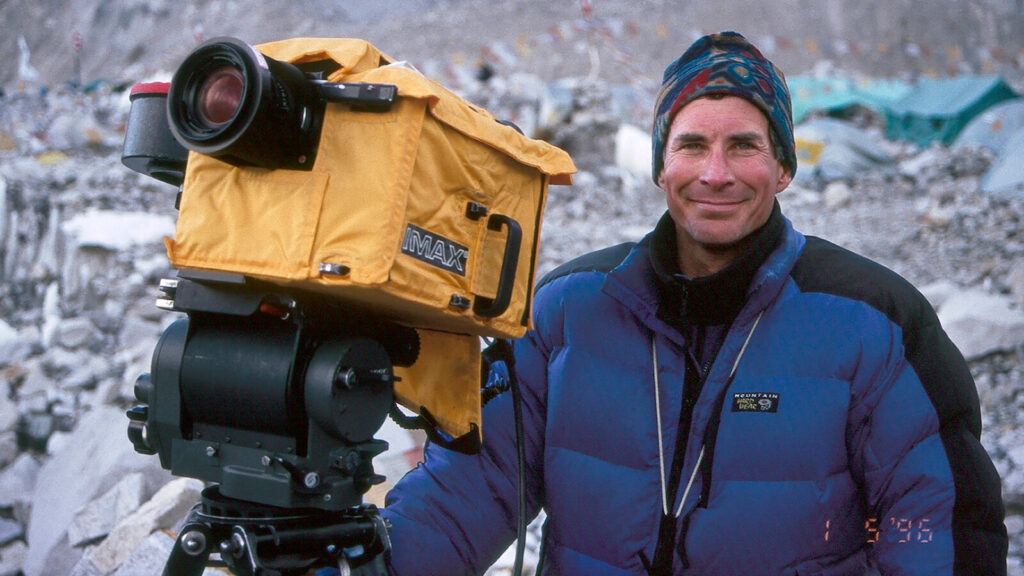David Breashears Case of Death: Remembering the Legendary Mountaineer and Filmmaker Who Passed Away in March 2024

The mountaineering and filmmaking communities lost a towering figure when David Breashears Case of Death died on March 14, 2024, at his home in Marblehead, Massachusetts. He was 68 years old. The cause of death was determined to be natural causes, though specific medical details were not publicly disclosed by his family at the time of his passing.
A Life Dedicated to the Mountains
David Finlay Breashears was born on December 20, 1955, in Fort Benning, Georgia, but grew up in Greece where his father was stationed with the U.S. military. His introduction to climbing came early, and by his twenties, he had already established himself as one of America’s most accomplished alpinists. His passion for mountains would define not just his career but his entire approach to life, combining athletic achievement with artistic vision in ways that revolutionized how the world sees and understands high-altitude mountaineering.
The Circumstances of His Death

David Breashears Case of Death was found unresponsive at his Massachusetts home on March 14, 2024. While his family confirmed that he died of natural causes, they chose to keep specific medical information private, respecting his legacy by focusing on his remarkable achievements rather than the circumstances of his final moments. His death came as a shock to many in the outdoor community, as he had remained active in various projects and appeared to be in good health in his recent public appearances.
The news of his passing spread quickly through mountaineering circles and the film industry, with tributes pouring in from climbers, filmmakers, and admirers worldwide. Many noted that while Breashears had faced death countless times on the world’s highest peaks, it was particularly poignant that he passed away peacefully at home, far from the extreme environments where he had spent so much of his life.
A Pioneer in High-Altitude Filmmaking
Breashears’ contributions to mountaineering extended far beyond his personal climbing achievements. He revolutionized high-altitude cinematography, becoming the first American to summit Mount Everest twice and using these expeditions to capture footage that would bring the world’s highest peak into homes around the globe. His 1998 IMAX film “Everest” remains one of the highest-grossing documentary films ever made, earning over $120 million worldwide and introducing millions to the beauty and danger of high-altitude mountaineering.
What set Breashears apart was his ability to combine technical climbing expertise with cinematic vision. He understood that to capture truly compelling footage at extreme altitudes, one needed to be both an elite climber and a skilled filmmaker. This dual expertise allowed him to place cameras in locations and capture angles that had never been achieved before, creating a new visual language for mountain cinematography.
The 1996 Everest Disaster and Into Thin Air
Perhaps no event better illustrated Breashears’ character and capabilities than his role during the tragic 1996 Mount Everest disaster. While filming his IMAX documentary, Breashears and his team found themselves in the midst of one of the deadliest seasons in Everest history, which would later be chronicled in Jon Krakauer’s bestselling book “Into Thin Air.”
During the disaster that claimed eight lives, Breashears and his team suspended their filming to assist in rescue efforts. His leadership, experience, and calm under pressure helped save lives during those critical days. The footage his team captured during this period provided invaluable documentation of the events and contributed to a better understanding of what went wrong during that fateful season.
Technical Innovations and Achievements
Throughout his career, Breashears pioneered numerous technical innovations in high-altitude filmmaking. He developed specialized camera equipment that could function in extreme cold and low oxygen environments, created new rigging systems for placing cameras in previously impossible locations, and trained teams of climber-cinematographers who could operate effectively at altitudes where most people struggle to survive.
His climbing achievements were equally impressive. Beyond his five successful Everest summits, Breashears completed numerous first ascents and challenging routes throughout the Himalayas and other mountain ranges. He was known for his meticulous preparation, exceptional physical conditioning, and ability to make sound decisions under pressure – qualities that allowed him to maintain an impressive safety record throughout decades of high-risk mountaineering.
Environmental Advocacy and Climate Documentation
In his later years, Breashears became increasingly focused on documenting the effects of climate change on mountain environments. He founded GlacierWorks, a non-profit organization dedicated to creating visual records of glacier retreat in the Himalayas. Through comparative photography projects, he demonstrated the dramatic changes occurring in these environments, providing crucial evidence of climate change impacts on some of the world’s most important water sources.
His work in this area combined his technical skills with a deep sense of environmental responsibility. By creating side-by-side comparisons of historical and contemporary photographs, Breashears made the abstract concept of climate change tangible and immediate, helping to raise awareness about the urgent need for environmental action.
Legacy and Impact
David Breashears’ death marks the end of an era in mountaineering and adventure filmmaking. His influence extends far beyond his individual achievements, having inspired countless climbers and filmmakers to push the boundaries of what’s possible in extreme environments. The techniques he developed and the standards he set continue to guide high-altitude cinematography today.
His legacy lives on through the films he created, the lives he touched, and the environmental work he championed. The David Breashears Foundation continues his mission of documenting and protecting mountain environments, ensuring that his vision for combining adventure with purpose endures.
Remembering a Visionary
As the mountaineering community continues to process the loss of David Breashears, his death from natural causes at age 68 serves as a reminder that even the most adventurous lives must eventually come to an end. Yet his passing at home, surrounded by the memories of a life fully lived, seems fitting for someone who spent so much time confronting mortality in the world’s most extreme environments.
Those who knew Breashears remember him not just as an exceptional climber and filmmaker, but as a thoughtful, generous individual who used his talents to inspire others and protect the environments he loved. His death leaves a void in the mountaineering and filmmaking communities that will be difficult to fill, but his contributions ensure that his influence will be felt for generations to come.
The cause of David Breashears’ death may have been natural, but his life was anything but ordinary. From the summits of the world’s highest peaks to the cutting rooms of Hollywood, from rescue missions in blizzards to quiet moments documenting glacier retreat, Breashears lived with purpose and passion. His passing reminds us that the measure of a life is not in how it ends, but in how it is lived – and by that measure, David Breashears’ life was truly extraordinary.



